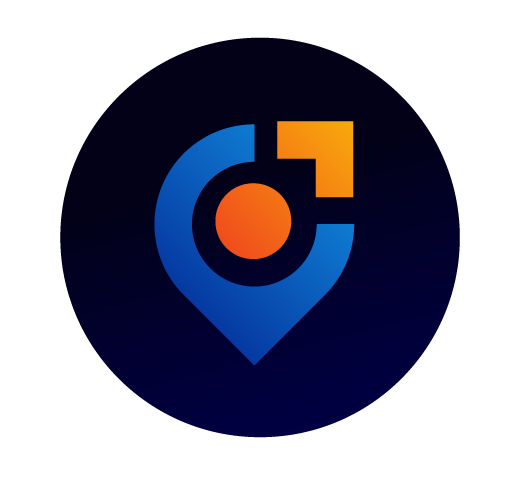Everyone has deadlines, to-do lists, and overflowing inboxes—sometimes all before lunch. Learning how to work smarter can change not just your workload, but the way you approach each day.
The job market pushes for efficiency, standing out, and repeatedly doing more with less. This makes time-saving apps a natural ally for professionals seeking a reliable edge.
Dive into this practical guide, packed with tools, examples, and clear steps tailored for anyone wanting to boost productivity and job satisfaction. Let’s get started.
Organizing Daily Tasks with the Right Digital Tool
Choosing a digital organizer sets you up for smoother days. Using time-saving apps removes guesswork, improves clarity, and helps you finish work responsibilities with fewer errors.
Employees managing multiple projects frequently say, “If it isn’t on my app, it doesn’t get done.” This single habit ensures nothing critical slips through the cracks.
Sequencing Your To-Dos for Maximum Impact
Sorting tasks by urgency using an app streamlines the mental load. A list labeled “Urgent,” “Waiting,” and “Later” prompts you to focus fast on what matters most.
Instead of a memory maze, create three lists in a time-saving app: urgent actions first, regular tasks next, follow-ups last. Scan them twice daily and update as items change status.
This approach lets managers and staff say, “I moved the project follow-up to tomorrow,” using the digital sequence as a single source of truth for daily work.
Syncing Team Calendars Without Overwhelm
Coordinating staff work schedules is simpler with calendar sharing in time-saving apps. Colleagues avoid surprise overlaps by syncing personal and team meetings into a single view.
For onboarding new hires, HR managers share access with a calendar link, so everyone sees training times and department shifts instantly. The day feels less chaotic to new staff.
Instead of email chains, use the time-saving app’s color-coded blocks—red for team check-ins, blue for project deadlines—to spot conflicts and reschedule with one tap.
| App Name | Main Feature | Ideal Use Case | Next Step |
|---|---|---|---|
| Trello | Kanban Boards | Managing project tasks visually | Create first project board |
| Todoist | Task Priority Levels | Daily task and subtask management | Assign deadlines by color |
| Google Calendar | Shared Schedules | Coordinating meetings across teams | Integrate with your email |
| Asana | Team Collaboration | Large project coordination | Add team members to tasks |
| Notion | Customizable Workspaces | Personal knowledge management | Try a meeting notes template |
Tracking Progress and Identifying Time Wasters
Measuring where your minutes actually go means better focus. Most people underestimate how much distraction creeps in, but time-saving apps reveal the truth in detailed reports.
By checking charts each Friday, professionals can say, “I spent twice as long on email as planned,” and adjust work routines to recover hours lost to unplanned interruptions.
Adopting the Weekly Review Habit
Block 15 minutes at the end of each workweek to look at your time-saving apps’ activity graphs. This routine makes hidden time-wasters easy to spot, week after week.
For example, a project lead noticed all hands meetings always ran 20 minutes over, just by comparing planned versus actual time in the app dashboard. Adjusting meeting times fixed the problem.
- Log all daily activities using a time-saving app. This builds awareness and helps spot small interruptions before they become big bottlenecks next week.
- Set color-coded categories for “Email”, “Meetings”, and “Focus Work”. Accurate labels boost your ability to tweak routines for next Monday and beyond.
- Compare weekly activity breakdowns. If “Admin Tasks” swell above expectations, reallocate or use automation in those areas.
- Schedule one “No Meetings” day. This forces focus blocks and highlights just how fractured work becomes without formal boundaries.
- Write down one big takeaway after your weekly review—”Less multitasking on Tuesdays,” for instance—to establish a habit that compounds over time.
This approach motivates small change instead of unrealistic overnight transformations, making time-saving apps an anchor for continuous personal improvement.
Replacing Manual Tracking with Automation
Switching from paper logs to automated trackers saves hours each month. A time-saving app that logs app and website use frees up mental space for more skilled work.
HR coordinators frequently implement automated reminders—”Submit this week’s report” pops up five minutes before the original deadline, which staff soon rely on as a timely nudge.
- Enable background tracking in your app to record activities automatically. You’ll never forget to log a client call or project block again.
- Use integrations to pull your meeting links and notes directly from your calendar. Fewer tabs means more cognitive energy for priority work.
- Set up custom reminders for each stage of your workflow. Small pings prevent long delays and missed approvals in crowded project pipelines.
- Invite your manager or peer to a shared dashboard. Public review motivates consistent entries, keeping everyone aligned and accountable.
- Review automation logs periodically. When “Document Update” notifications are ignored consistently, it’s a cue to clarify task ownership.
Automated tracking within time-saving apps not only prevents honest mistakes, but also supports a transparent work culture where decisions get made with the facts in hand.
Blocking Distractions and Staying in Focus Mode
With uninterrupted focus blocks, results improve predictably. Using time-saving apps to schedule and defend these windows guarantees more consistent performance all week.
Using App-Based Do Not Disturb Rules
Activate a “Do Not Disturb” period in your time-saving app right as deep work starts. Colleagues quickly know you’re unavailable, and new notifications wait until the block ends.
Designers report setting a visible timer—”Working on design draft, back at 2:00 pm”—and their teams respect these boundaries automatically, without repeated check-ins.
This habit is as clear as putting a cone on your desk: both signal “heads-down time.” Start each block with a clear app status, and let interruptions wait till the bell.
Prioritizing Communication Windows with Team Agreements
Agree on designated reply slots—”Messages checked at 11:30 am and 4:00 pm”—and post these hours in the team’s time-saving app profile. Fewer minute-to-minute pings help everyone work smarter.
Finance professionals clarify, “I’ll review requests twice daily. If it’s urgent, add ‘Priority’ to the subject.” This keeps routine workflow smooth but allows for rare exceptions.
Consistency with these micro-rules strengthens respect for each team member’s time, creating an office environment where focused progress is valued over constant checking in.
Building Sustainable Habits for Digital Productivity
We’ve walked through targeted ways time-saving apps boost daily performance: powerful task lists, automated logs, focused blocks, and restored work-life balance.
Applying these tools in the job market helps professionals act with greater confidence and dependability. Each feature offers a step toward stand-out results and healthy routines.
Start small—test one new app or rule per week, and notice the impact each change brings. Working smarter, not just harder, is a decision you make one action at a time.



